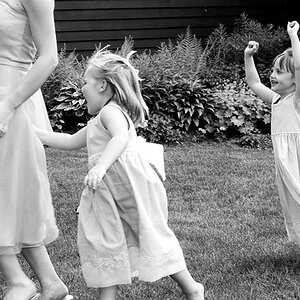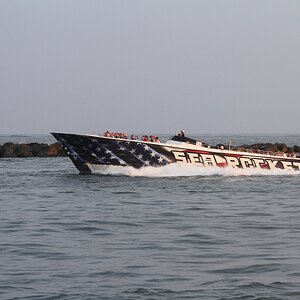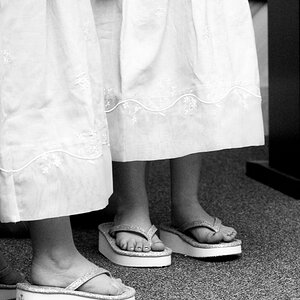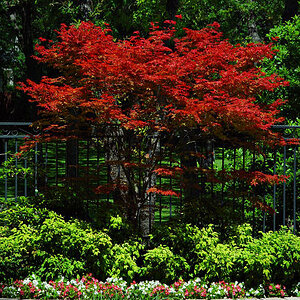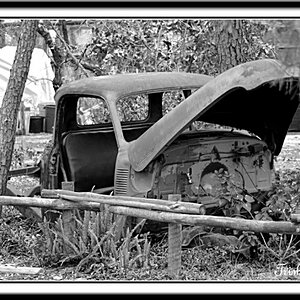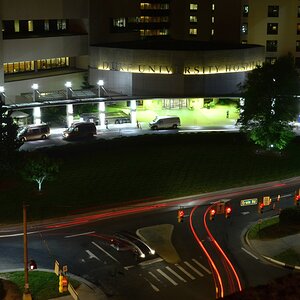vintagesnaps
Been spending a lot of time on here!
- Joined
- Jan 13, 2013
- Messages
- 9,119
- Reaction score
- 3,109
- Location
- US
- Can others edit my Photos
- Photos NOT OK to edit
Something that might help you learn to know what your picture will look like is to spend some time looking thru the viewfinder without releasing the shutter or before you start taking pictures when you're out and about with your camera. Try thinking about what you're seeing and if you think it will make a good picture. Make your eye move around the entire rectangle of your viewfinder and make sure what you see in there is what you want in your picture; if not you can move around and change your vantage point. I think it might take time to develop skills in visualizing what your pictures will look like, for me it's more a matter of if it turned out the way I envisioned.
In general I usually use 400 speed film indoors or lower light, 100 ISO outdoors (it's referred to as film speed, ISO is actually a measure of light sensitivity). My starting point is usually 1/125 shutter speed, I don't like to go slower than 1/60 of a second (the shutter speeds are fractions of a second, so as the numbers get bigger the speed is faster and allows in less light). In low light if I need to use a slower speed I try to brace myself to avoid shutter blur if possible.
To get a proper exposure, since your ISO is already determined by what speed film you're using, it's a matter of setting an accurate shutter speed and aperture. I'm used to meters that read -1,0,+1 etc. and I want to have the meter's needle in the middle at 0. With your camera it looks like once you set the shutter speed your meter will tell you how to set the aperture. On p.9 "One Shot at a Time" it shows the needle pointing to f5.6. If the needle seems to fluctuate, then take a picture at, for example, 5.6 and 4 (if the needle is between those two numbers). Or choose whichever seems to be the closest. It may not make a huge difference but usually if I want to make sure I have a good exposure I'll shoot a couple of shots, one at each aperture that the needle's in between.
What you've already been doing, shooting the same shot at different settings and writing down what you did, is a great idea, I've often kept notes while I'm out shooting. I've sometimes done what's called bracketing, which is sort of what you're doing; shooting B&W if I was going to do prints in the darkroom and wanted to make sure I got negatives that weren't too thin or too dense, I'd take maybe 2-3 shots, changing usually the aperture each time (if the camera showed f5.6 I'd take one at f5.6, f4, f8).
My starting point is usually at f8 since it's a midrange aperture and I can turn the lens either way and open up the lens more or close it down some. The f stop is a measurement that is a fraction of the focal length of the lens, so f8 means the size of the lens opening is 1/8 the focal length, f16 is 1/16th the length, f2 is 1/2 the length, etc. You could try before you load film looking thru the back of the camera and see what it does at different aperture and shutter speed settings, that way you might be able to actually see the shutter moving slower or faster, and the lens opening letting in more light and closing down to smaller apertures letting in less light.
(Edit - yes, you want to start the film counter at 1, on yours it looks like it show 0.2 etc. and you'd set it at the dot between 0 and 2. When you're loading film the tail is already being exposed to light so that's why you advance it to 1 to get that tail spooled into the cartridge.) Whew, I hope this makes sense, use what works best for you from the suggestions.)
In general I usually use 400 speed film indoors or lower light, 100 ISO outdoors (it's referred to as film speed, ISO is actually a measure of light sensitivity). My starting point is usually 1/125 shutter speed, I don't like to go slower than 1/60 of a second (the shutter speeds are fractions of a second, so as the numbers get bigger the speed is faster and allows in less light). In low light if I need to use a slower speed I try to brace myself to avoid shutter blur if possible.
To get a proper exposure, since your ISO is already determined by what speed film you're using, it's a matter of setting an accurate shutter speed and aperture. I'm used to meters that read -1,0,+1 etc. and I want to have the meter's needle in the middle at 0. With your camera it looks like once you set the shutter speed your meter will tell you how to set the aperture. On p.9 "One Shot at a Time" it shows the needle pointing to f5.6. If the needle seems to fluctuate, then take a picture at, for example, 5.6 and 4 (if the needle is between those two numbers). Or choose whichever seems to be the closest. It may not make a huge difference but usually if I want to make sure I have a good exposure I'll shoot a couple of shots, one at each aperture that the needle's in between.
What you've already been doing, shooting the same shot at different settings and writing down what you did, is a great idea, I've often kept notes while I'm out shooting. I've sometimes done what's called bracketing, which is sort of what you're doing; shooting B&W if I was going to do prints in the darkroom and wanted to make sure I got negatives that weren't too thin or too dense, I'd take maybe 2-3 shots, changing usually the aperture each time (if the camera showed f5.6 I'd take one at f5.6, f4, f8).
My starting point is usually at f8 since it's a midrange aperture and I can turn the lens either way and open up the lens more or close it down some. The f stop is a measurement that is a fraction of the focal length of the lens, so f8 means the size of the lens opening is 1/8 the focal length, f16 is 1/16th the length, f2 is 1/2 the length, etc. You could try before you load film looking thru the back of the camera and see what it does at different aperture and shutter speed settings, that way you might be able to actually see the shutter moving slower or faster, and the lens opening letting in more light and closing down to smaller apertures letting in less light.
(Edit - yes, you want to start the film counter at 1, on yours it looks like it show 0.2 etc. and you'd set it at the dot between 0 and 2. When you're loading film the tail is already being exposed to light so that's why you advance it to 1 to get that tail spooled into the cartridge.) Whew, I hope this makes sense, use what works best for you from the suggestions.)
Last edited:


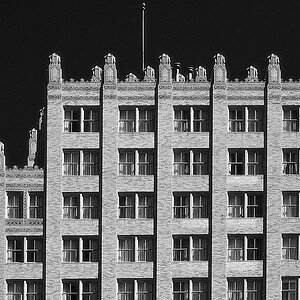
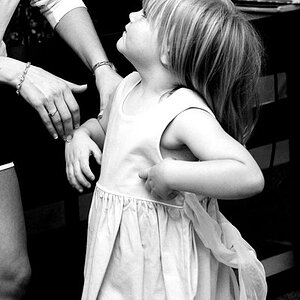
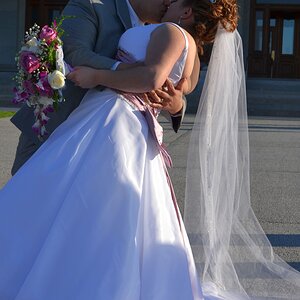
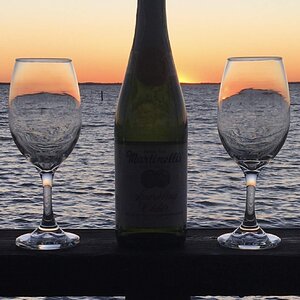
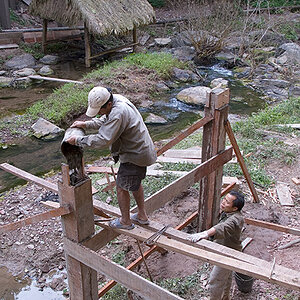
![[No title]](/data/xfmg/thumbnail/32/32929-22e23acc63d6ecb25e5ee941be87121f.jpg?1619735758)
